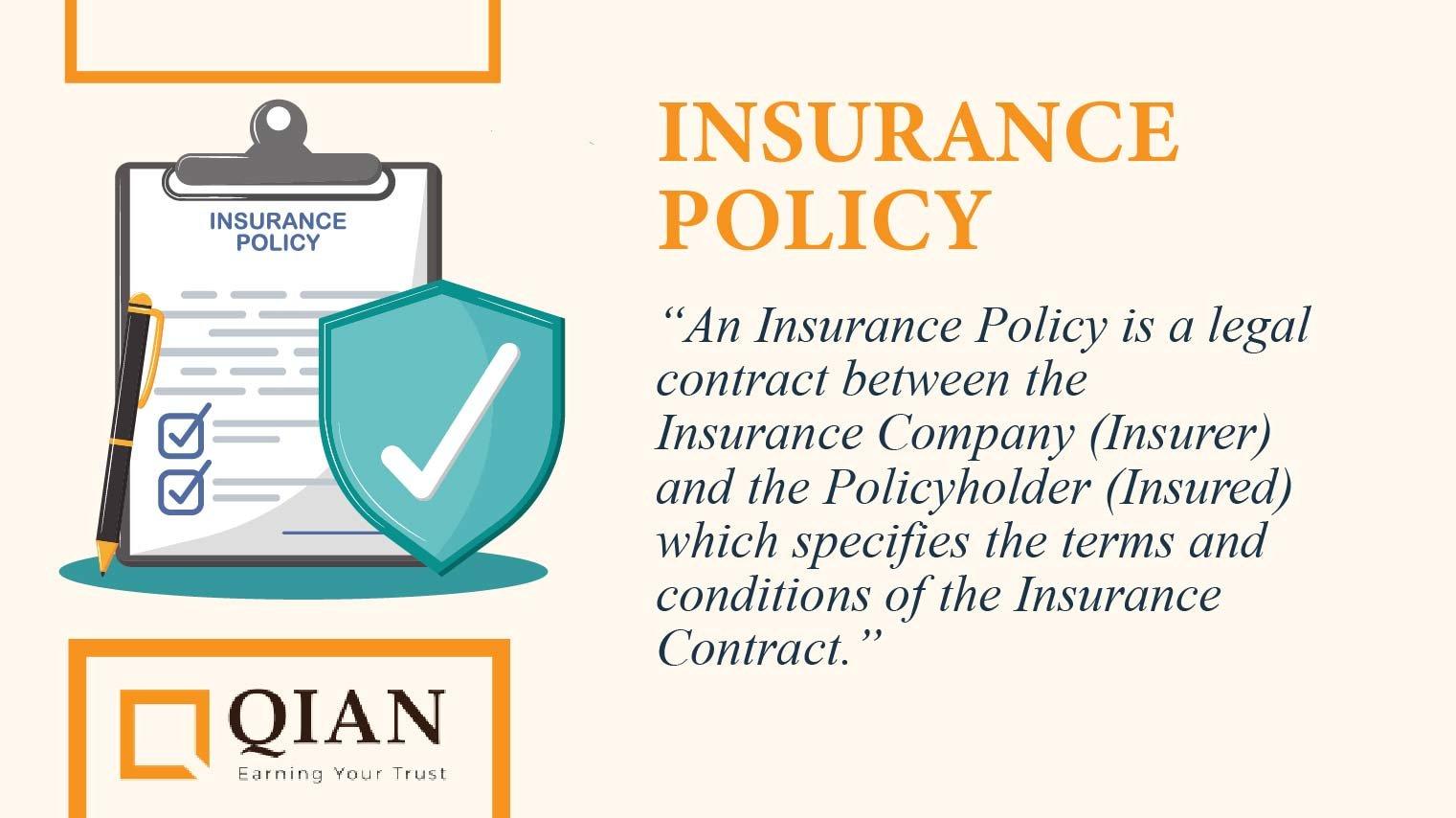Navigating the world of insurance can be daunting, especially for first-time buyers. With an array of policies, terms, and coverage options available, it’s easy to feel overwhelmed. Whether you’re looking for health insurance, auto coverage, or homeowner’s protection, understanding the essentials is crucial for making informed decisions. In this article, we’ll provide you with essential tips for first-time insurance buyers, helping you demystify the insurance landscape and ensuring that you choose the right coverage tailored to your needs. From understanding the basic jargon to assessing your specific requirements, these insights will empower you to approach your insurance purchase with confidence and clarity. Let’s get started on paving the way for a more secure future!
Table of Contents
- Understanding Different Types of Insurance Policies
- Assessing Your Personal Needs and Risks
- Comparing Quotes and Coverage Options
- Navigating the Fine Print and Policy Terms
- To Conclude
Understanding Different Types of Insurance Policies

When considering insurance, it’s essential to familiarize yourself with the various types of policies available. The two main categories of insurance include life insurance and property insurance. Life insurance provides financial protection to your beneficiaries in the event of your death, ensuring they are not burdened with debts or living expenses. On the other hand, property insurance covers physical assets such as homes, vehicles, and personal belongings, safeguarding them against risks like theft or natural disasters. This basic understanding will help you identify which policy is most applicable to your circumstances.
Beyond these broad categories, there are several specific types of insurance policies that cater to various needs. Consider the following options:
- Health Insurance: Covers medical expenses, routine doctor visits, and emergency care.
- Auto Insurance: Protects against losses related to vehicle operation, including damage and liability.
- Homeowners Insurance: Provides coverage for your home and personal property against hazards like fire and theft.
- Renters Insurance: Similar to homeowners insurance but tailored for rented spaces, covering personal belongings.
It’s vital to evaluate your individual needs when selecting an insurance policy. Creating a table comparing some of the policy types might also aid in decision-making:
| Type of Insurance | Coverage Scope | Target Audience |
|---|---|---|
| Life Insurance | Death benefits for beneficiaries | Individuals with dependents |
| Health Insurance | Medical costs and treatments | Everyone, especially families |
| Auto Insurance | Vehicle damage and liability | Car owners |
| Homeowners Insurance | Home structure and personal items | Homeowners |
Assessing Your Personal Needs and Risks

When embarking on your insurance buying journey, the first step is to carefully evaluate your personal circumstances to identify what types of coverage you truly need. Think about your lifestyle, assets, and future goals. Consider the following aspects:
- Your Financial Situation: Analyze your income, savings, and existing debts. This will guide you in understanding how much premium you can afford and what coverage is necessary to protect your financial health.
- Your Dependents: If you have family members relying on your income, life insurance could be critical. Assess how much they would need if you were no longer around.
- Your Assets: Look at your home, car, and valuables. Each may require different types of coverage to ensure they are fully protected in unforeseen circumstances.
Once you’ve determined your basic needs, it’s crucial to identify any potential risks that may affect your life or assets. This assessment might include:
- Health Conditions: Pre-existing conditions can influence your health insurance choices and premiums.
- Location: Living in an area prone to natural disasters can necessitate additional coverage for your home or business.
- Lifestyle Choices: If you engage in risky activities, such as extreme sports or travel to hazardous regions, consider how these factors impact your insurance needs.
| Risk Factor | Potential Coverage Needed |
|---|---|
| Health Issues | Comprehensive Health Insurance |
| Natural Disasters | Home Insurance with Specific Disaster Coverage |
| High-risk Activities | Specialized Liability Insurance |
Comparing Quotes and Coverage Options
When diving into the world of insurance, it’s crucial to understand that not all policies are created equal. Comparing quotes can reveal significant differences in pricing, but it’s equally important to look beyond just the numbers. Here are some key factors to consider when evaluating your options:
- Coverage Limits: Ensure the policy offers limits that adequately cover your needs.
- Exclusions: Pay attention to what is not covered; this can vary widely among insurers.
- Deductibles: Understand the amounts you must pay out of pocket before coverage kicks in.
- Customer Service: Research reviews and ratings to get a feel for how reliable their support is.
To help visualize the differences between options, consider creating a simple comparison table. A table can clarify how various policies stack up against each other. Here’s an example format:
| Provider | Monthly Premium | Coverage Limit | Deductible |
|---|---|---|---|
| Insurer A | $100 | $250,000 | $1,000 |
| Insurer B | $120 | $300,000 | $800 |
| Insurer C | $90 | $200,000 | $1,500 |
Using this format can streamline your decision-making process and ensure you’re picking a policy that offers the best value for your specific needs. Always take the time to assess both price and coverage options carefully; doing so can save you money and provide the protection you require.
Navigating the Fine Print and Policy Terms
Understanding the details of your insurance policy can feel overwhelming, especially for first-time buyers. It’s crucial to take your time in reading the fine print and understanding policy terms so that you don’t encounter any unexpected surprises when making a claim. Here are some key aspects to focus on:
- Coverage Limits: Be aware of how much protection is offered and whether it’s sufficient for your needs.
- Exclusions: Identify what is not covered under your policy to ensure you are not left unprotected in critical situations.
- Deductibles: Understand the out-of-pocket costs you will need to incur before the insurer takes over payments.
- Terms of Renewal: Clarify how your policy will change upon renewal and what factors might affect future premium costs.
Consider creating a simple comparison chart to evaluate policies. This helps to ensure you’re making an informed decision based on key aspects of multiple options. Here’s a helpful table format you can use:
| Policy Feature | Policy A | Policy B | Policy C |
|---|---|---|---|
| Coverage Amount | $100,000 | $120,000 | $90,000 |
| Deductible | $500 | $750 | $300 |
| Exclusions | Pre-existing conditions | Natural disasters | Not specified |
Taking the time to assess and understand these elements will empower you to make better choices in selecting the right insurance policy for your unique situation.
To Conclude
navigating the world of insurance for the first time can feel overwhelming, but it doesn’t have to be. By taking the time to educate yourself about your options and understanding your individual needs, you’ll be better equipped to make informed decisions. Remember, the key is to compare policies, ask questions, and seek expert advice when necessary. Don’t hesitate to shop around and take advantage of online tools that can simplify the process. With the right knowledge and resources at your disposal, you can find the perfect insurance coverage that gives you peace of mind. Thank you for joining us on this journey to becoming a savvy insurance buyer, and may your experience be smooth and successful!



